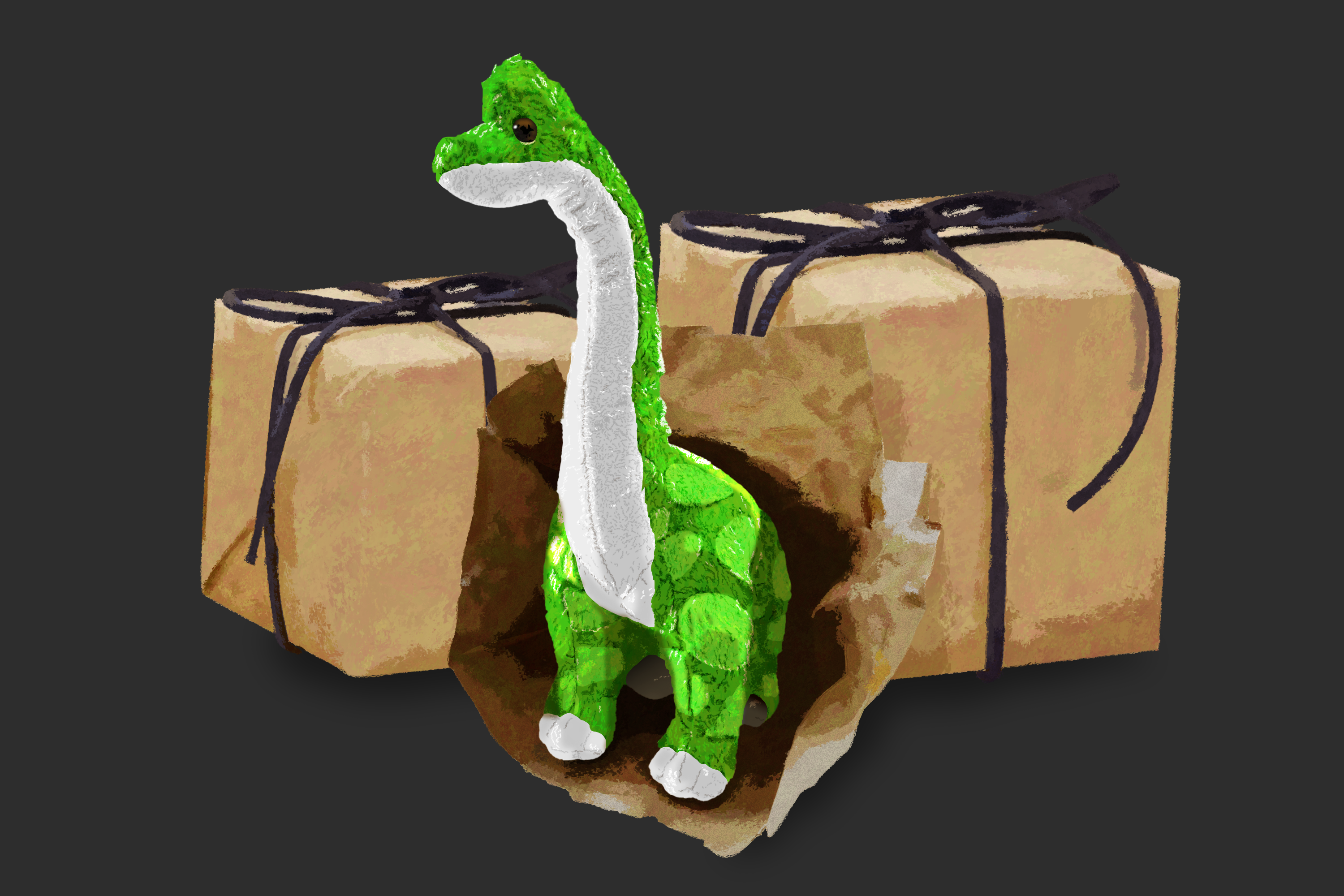We love to blame ever-shortening attention spans for the ephemeral nature of toys, but fair’s fair: Kids zip through developmental stages—and the gear that goes with them—as fast as their moods swing from naughty to nice. So it makes sense that, to every elf’s chagrin, 80% of toys end up in landfills, and that they make up 6% of plastic in the world’s trash heaps.
It’s enough to make any climate-conscious adult bah-humbug every Furby or L.O.L. Surprise doll, but don’t be so hasty. Toys are extremely key for kids’ development, helping them form all sorts of essential skills, and—this is the important bit—tearing open gifts gives them the kind of euphoria they’ll be nostalgic for into adulthood. So, yes, it’s OK to say “f*ck it” (within reason) and buy the kiddos the plastic-est, buzziest, multipart-est hotness. All we ask is that you have a plan to make those toys last and keep them out of the dump.
1. Buy long-lasting toys that grow with kids
Even if you decide to spring for the hunk of plastic that kinda-sorta looks like a Marvel character, consider toys that can grow with a kid over time. Something like a Brio train set can be built on year after year—so can a play kitchen, a Barbie dream house, a castle or farm set, or the beginnings of a costume box you can continue to grow with Facebook Marketplace finds and DIY projects. The same thinking applies to building toys like Magna-Tiles and Legos, which can help develop science and math skills from a young age.
2. Keep them in good shape
Even with the best-laid plans, no toy lasts forever, so do your best to make sure you can pass ’em in good condition. For toys that come with a warranty, don’t forget to send in the card to register your purchase in case you ever need a repair or a replacement that’s covered. If you’ve got space, hold on to instructions and keep the boxes things came in. These things will 1) help the toy retain any sort of resale value and 2) ensure it’s ready for the next owner. Also, be sure to keep things clean: Most toys benefit from a regular rubdown with a disinfectant or a quick bath in soapy water.
3. Find them a new home
When a kid has grown out of the toy du jour, don’t junk it. “We live in a world with so much beautiful, interesting, odd, unique stuff,” says Jean Ponzi, an environmental educator at the Missouri Botanical Garden, “and that stuff gets really vilified when you think of it as clutter.” There are, however, plenty of avenues for giving unused toys a second life.
Marketplaces & exchanges. Staying close to home, you can invite your neighbors and friends with children to a local toy swap, where kids can contribute their old toys and trade them in for new-to-them ones. Of course, you can always sell—and source!—good toys on Facebook Marketplace or Mercari, or list them in a nearby Buy Nothing group.
Libraries. Libraries across the country lend out toys, and they often accept donations, which can extend new-toy-joy to many children’s playtimes. Check the USA Toy Library Association to find a location near you.
Charities. Shelters, day cares, churches, and community centers are often great homes for used toys. You can find your own local spots through Second Chance Toys or Donation Town, which can match you up with organizations that pick up from your home. SAFE (Stuffed Animals For Emergencies) is a well-established charity that collects plushies, which can be hard to donate, for families and children in crisis situations.
Take-back programs. Sadly, sometimes, an armless, legless Barbie or a Sharpie-scribbled Mr. Potato Head has no life left to give. But all’s not necessarily lost. Lego runs a robust Replay program through which they repurpose used bricks and figurines, and many big toy companies like Mattel and Hasbro also run mail-back services through which they claim to turn run-through toys into plastic for things like playground equipment. As a very last resort, you can request a recycling mailer through Terracycle, though the company has come under plenty of scrutiny for its “recycling-the-unrecyclable” claims.
Additional reporting by Olivia Gieger

